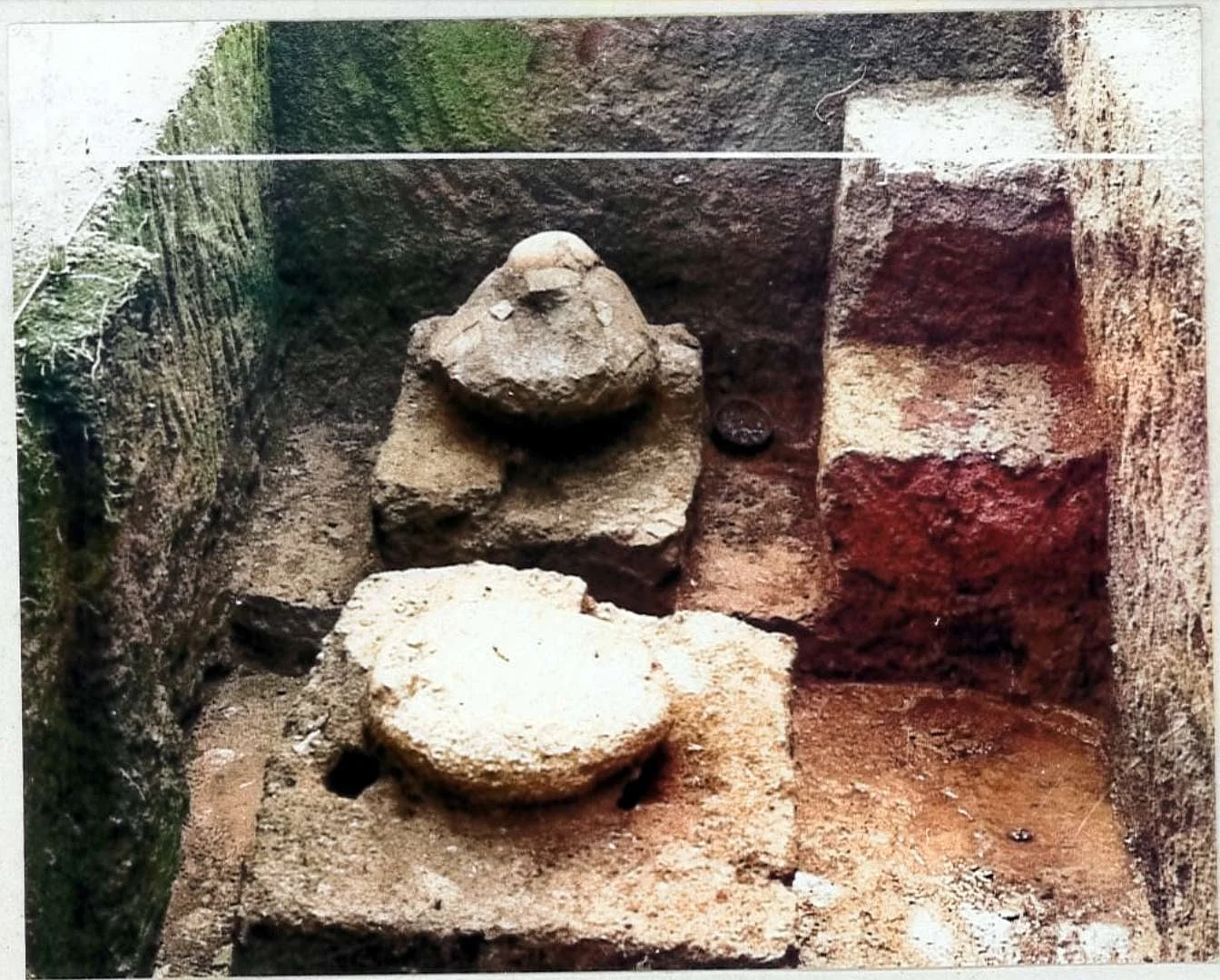Tigkiw na Saday - Prehistoric Jar Burials [Little Tigkiw Site - Casiguran, Sorsogon]
This article features the prehistoric jar burials from the Little Tigkiw Site, a burial site locally known as “Tigkiw na Saday” in the Municipality of Casiguran, Province of Sorsogon.
In 1978, a #NationalMuseumPH archaeology team led by Dr. Eusebio Dizon were excavating in Barangay Escuala, Casiguran, when local authorities informed them about a nearby site. The team went on a 45-minute hike to the hilltops, situated on the intersection of the municipal boundaries of Casiguran, Gubat, and Barcelona, Sorsogon, to survey. When they arrived, previous pothunting activities at the site became evident, as confirmed by reports from the property caretaker.
The excavation at Little Tigkiw Site unearthed a total of eight burial jars with covers. The earthenware jars are plain and unslipped. Two of the jars that have disk-like earthenware covers with impressed design do not contain artifacts. The other six jars have circular stone covers made of volcanic tuff, which are dome-shaped and grooved to fit the lips of their matching jars.
 |
| Excavation of Jar Burial no. 1 (top) and Jar Burial no. 2 (bottom). Colorized image from the 1978 field report “Preliminary Report on Little Tigkiw Archaeological Site” by Dr. Eusebio Dizon |
Only five of these burial jars have artifacts inside. There were no human skeletal remains found in all the jars. The largest of the jars, averaging 70 cm in height, 71 cm in body diameter, and 34 cm in mouth diameter, were found in the deeper levels of excavation. The earthenware jars recovered in the more recent upper levels are relatively smaller, averaging 43 cm in height, 49 cm in body diameter, and 20 cm in mouth diameter.
 |
| Glass Beads found at Little Tigkiw Site. Colorized image from the 1978 field report “Preliminary Report on Little Tigkiw Archaeological Site” by Dr. Eusebio Dizon. |
The most significant artifacts are the multi-colored, flat-round and spherical glass beads that were found inside two jars—Jar Burial no. 3 and Jar Burial no. 4 in particular. For Jar Burial no. 3, 18 beads were found inside and beneath it, wherein 11 are in Prussian blue and 7 in orange. Furthermore, 10 broken jade green beads and a broken piece of blue bead were also found. Jar Burial no. 4, on the other hand, had 74 fragments of flat-round glass beads recovered from and underneath the broken jar. Of the 74 glass beads fragments, 24 are in jade green color, 5 in Prussian blue, 7 in yellow, 19 in brick red, 18 in orange, and a spherical orange bead. These glass beads were characterized as alkali glass by obtaining its specific gravity. Existing archaeological studies such as Jose Lugay’s 1972 publication, “Determination of the Methods of Manufacture of Glass Beads”, revealed that manufacturing of alkali glass beads were widespread in the Philippines during the Developed Metal Age (about 2200 to 1800 years ago) and continued up to the Age of Contact and Trade (16th to 19th century).
The relative date of the Little Tigkiw Site is within the Developed Metal Age in the Philippines. This means that a group of people with developed social, economic, and political society settled at Little Tigkiw. The manufacture of heavy stone covers and huge earthenware burial jars suggests that these people have excellent craftsmanship. The transition from the use of volcanic tuff cover to the use of decorated earthenware cover for the burial jars signifies improvement in their jar burial craftsmanship.
The burial jars’ distribution on, specifically in the deeper parts of the site, indicates social grouping or class distinction among the people buried at Little Tigkiw. The distinguished pattern suggests that women were possibly buried in the jars which contained multi-colored glass beads, whereas, the males were possibly buried in the jars associated with metal implements.
Want to know more about the site? You may download the 1979 publication on the final report on “Tigkiw na Saday: A Jar Burial Site” by Dr. Eusebio Z. Dizon here: https://tinyurl.com/TigkiwNaSaday
Your #NationalMuseumPH is temporarily closed again to the public due to the rising cases of COVID-19. In the meantime, please #StayHomeStaySafe, enjoy our #MuseumFromHome series, and stay tuned for a virtual tour of the “Palayok: The Ceramic Heritage of the Philippines” exhibit.
___________________
Credits
Text by Gerard John Palaya, image colorization by Randy Episcope, and poster by Timothy James Vitales | NMP Archaeology Division
Archival images by Dr. Eusebio Dizon | Scientist and former Museum Curator of NMP Archaeology Division
©National Museum of the Philippines (2021)

![Tigkiw na Saday - Prehistoric Jar Burials [Little Tigkiw Site - Casiguran, Sorsogon]](https://blogger.googleusercontent.com/img/b/R29vZ2xl/AVvXsEi5vU5LPduvkIGiw4JIBE2xdIVXyDBXc3SFsnUx28D53QfshuNfV9kNczmK2rWuS4IszNZrsEzK7s4m48k5PzS6vXMdblAR1BSwxSrEbRZ8kE4Ft-i1ap4Y5F0f_Ub97bB1S3sZ/s16000-rw/176524954_4235483256475960_8299510109578203208_n.jpg)








No comments:
Got Something to Say? Thoughts? Additional Information?